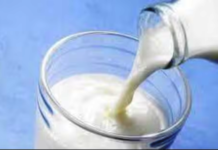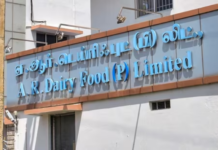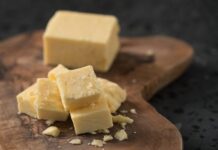New Delhi, January 15, 2022: Indian cuisine has benefited from numerous food influences. The diverse climate in the region, ranging from deep tropical to alpine has also helped broaden the set of ingredients readily available in India. Over the centuries food has become a marker of religious and social identity.
Throughout history, India’s borders have seen the passage of many in search of its distinctly aromatic spices. From cardamom to turmeric, the spices of India have led to the creation of one of the world’s most vibrantly flavourful cuisines. Citizens of India dress up differently, have different cuisine and their social and religious pursuits vary. Indian cuisine varies from region to region. Traditionally, some states in India have their own unique dishes, which they often prepare during religious and social gatherings. The many similarities between the culinary regions of India are highlighted with an exquisite use of spices and flavours. They range from cardamom, cumin, cloves, fennel seeds and garlic to ginger, chilies, fenugreek, saffron and turmeric. Spice mixtures or masalas are a crucial element of Indian cuisine. Whether fresh or dried, masalas make use of local ingredients and are prepared daily. While meat, poultry, fish and seafood dishes are offered throughout India, most vegetarian specialties are found in the central and southern regions.
Hindu philosophy
One strong influence over Indian foods is the longstanding vegetarianism within sections of India’s Hindu, Buddhist and Jain communities. By 3,000 BC turmeric, cardamom, black pepper and mustard were harvested in India. Many recipes first emerged during the initial Vedic period. At this stage India was still heavily forested and agriculture dominated the region. Some segments of the population embraced vegetarianism, due to the ancient Hindu philosophy of ahimsa. This practice gained more popularity following the advent of Buddhism and a cooperative climate where a variety of fruits, vegetables, and grains could easily be grown throughout the year. India’s perfected vegetable cookery offers rich and succulent dishes, ranging from appetizers and side dishes to entrees and fried, roasted, braised, sautéed, pureed and stuffed. Dairy products, fruits, nuts, spices and seasonings are used to embellish greens (palak), eggplant, gourds, roots and squash. Caramelized onions and tomatoes provide the foundation for many sauces and stews. Cauliflower and potatoes (alu gobi), peas and potatoes (alu matter), peas and cheese (matter paneer), and spinach and cheese (saag paneer) are popular vegetable combinations.
Islamic rule introduced rich gravies, pilafs and non-vegetarian fare such as kebabs, resulting in Mughlai cuisine (Mughal in origin), as well as such fruits as apricots, melons, peaches, and plums. The Mughals were great patrons of cooking. Opulent dishes were prepared during the reigns of Jahangir and Shah Jahan.
Central Asian influence
The Nizams of Hyderabad state lovingly developed and perfected their own style of cooking with the most notable dish being the Biriyani. While basmathi is generally reserved for special occasions, plain boiled rice is served with everyday meals. Tandoori chicken is a desired dish that augments the biriyani. One- pot rice dishes, such as biriyani- a combination of basmathi rice, meat or seafood, vegetables and expensive spices, nuts and yogurt are often prepared for celebrations and religious festivals.
For an added dimension of flavour, a variety of fruits are served fresh or pickled, such as chutney and relish. Dairy products, such as clarified butter (ghee), cheese (paneer), yogurt, milk and buttermilk (moru) are used as ingredients and condiments. Raita is a popular chilled yogurt condiment garnished with chopped fruit or vegetables and spices. Dal preparations (dried legumes and pulses) are at the centre of Indian meals. When combined with grains, they provide an inexpensive source of essential protein. Dals are prepared whole and pureed and are generally served with vegetables and meat. In the northern regions, thick and hearty stew-like dals are eaten with bread, while the thinner preparations of the south are best suited for rice. Channa dal or gram lentil is the most widely grown dal in India. Meals in the northern Indian region consist mostly of chapattis (rotis) accompanied by Dal (pulses), vegetables and curds. Rice is also taken but in lesser quantities. Side dishes consist of chutney (preserves) as well as achar (pickles).
There are the Mughlai and Kashmiri cuisines, which represent the Central Asian influence. People from this region also consume a lot of milk based sweets. In the north, breakfast often consists of Paranthas rolled (chapattis made of ghee) and puris (small chapatis fried in oil). Maharashtra people love eating fish and meat. Fish is often stuffed or fried lightly. Meat, on the other hand, is braised and spiced up with sour and sweet ingredients. Many Punjabis also eat meat. They have lamb and chicken dishes laced with spicy mustard, sweet or onion cream sauces. They also enjoy sweet lassi (buttermilk) and fresh cheese.
In South Indian cuisine rice is consumed and most of the dishes are made up of rice. The consumption of rice is heavy along with vegetables and dal as well as chutney. For breakfast they have Idlis (steamed rice cakes) and Dosas (a type of pancake), which are made of rice and dal. Upma (a type of porridge) which is also rice based, is also very popular. Sambar (a liquid soup) is consumed with most of the breakfast items. Coconut is consumed a lot in Indian food preparations. It is used in chutneys as well as in curries in Kerala. The staple food of South India is rice.
International recognition
In West Bengal fish is consumed and appreciated. Fish and rice is very popular. Sweets are also consumed in plenty. The fish is sautéed in yoghurt and marinated in spices, which consist of cumin seeds, mustard, black cumin seed and fenugreek. Mustard oil is used. Most of the sweets are cheese or milk based such as rasgolla, gulab jamun and sondesh. In Rajasthan and Gujarat plenty of achar and a variety of dals are consumed as not many vegetables are available. In Gujarat the food is generally vegetarian.
The staple grain is millet, wheat being secondary. Other stuff eaten are sesame, peanuts and several vegetables. Pulses are very essential as a source of protein for the Gujaratis, whether taken as a side dish or as soup known as Dal. “Kichdi” is also very popular, which consists of mild rice and lentils.
Indian dishes are very popular overseas. Many restaurants in the West offer Indian cuisine. Generally, Indian cuisine is considered to be spicy, but the sweets can be very tasty to eat according to the reports published in dailynews.lk.
Foods like milk based sweets, snacks (idli, vada, samosas etc.) have become an integral part of Indian culture. These traditional foods have already gained international recognition. Indians have proudly carried their culinary practices wherever they immigrated and as a result, we have witnessed Indian cuisine catering to the global audience and captivating their taste buds.





































